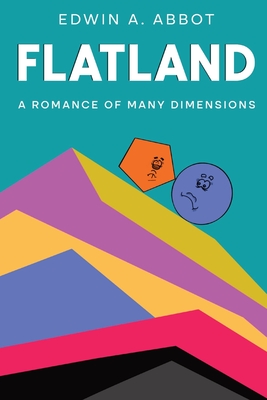Section 12: Of the Doctrine of our Priests
bySection 12 reveals a deeply rooted system where a person’s form dictates their place in society, leaving little room for individuality or change. In this structured world, one’s geometric shape determines social status and moral worth. Circles, viewed as the highest class, uphold a doctrine claiming that the more symmetrical a figure, the more virtuous and intelligent it must be. Such a belief leaves no space for merit or effort, reducing identity to mathematical precision. Even minor irregularities, like unequal sides in a triangle, are seen as signs of moral or intellectual weakness. Instead of nurturing these individuals, society seeks to “correct” them through medical intervention, treating imperfection as an illness. The result is a society obsessed with appearance, where deviation is punished and conformity is glorified. What might seem logical in a world governed by shape quickly becomes a satire on how rigid thinking stifles growth and compassion.
The role of women in this system exposes an even more troubling aspect. Considered irrational and overly emotional, women are denied any form of intellectual education. Their existence is reduced to obedience, beauty, and safety, all under the illusion of protection. This leads to an unspoken linguistic division—men must use one form of speech with women and another with their peers. This duality burdens communication and deepens the societal rift between genders. Publicly, women are praised for their role as caretakers and moral guardians, but in private, they are dismissed and controlled. The contrast reveals the hypocrisy embedded within this social order. A society that exalts women in rhetoric yet restricts them in practice creates a culture of silent repression. The lack of educational opportunity doesn’t just limit women—it weakens the entire structure by encouraging ignorance and dependence.
The obsession with configuration not only limits human potential but also fuels inequality. By linking shape to virtue, the society validates discrimination, making cruelty appear scientific. Those who do not meet the geometric ideal are seen not just as different, but as defective. This kind of judgment leaves little room for empathy, as it denies personal choice and experience. Moreover, it encourages self-policing and social paranoia, where everyone must constantly prove their regularity. Those with imperfect forms are treated not as individuals but as problems to be fixed or hidden. This relentless pressure crushes creativity and promotes a fear-driven culture. The message is clear: uniformity is rewarded, while uniqueness is punished. And when identity is reduced to angles and sides, the complexity of human life is lost entirely.
In many ways, the satire offers a mirror to any real-world society where appearances dictate value. Just as Flatland relies on shape, modern cultures may rely on race, gender, or status. The story warns against systems that judge people by attributes they cannot change. It critiques not only the system, but also those who support it out of convenience or fear. The most dangerous ideologies are those presented as natural or scientific, because they appear unquestionable. And yet, the moment we begin to question the fairness of such systems, the illusion begins to crack. The rigidity that once felt unshakable reveals its fragility under scrutiny. Progress begins not with revolution, but with recognition—that the rules we’ve inherited may not be just.
When women are excluded from knowledge, society loses half its potential thinkers, innovators, and leaders. By denying them education, Flatland creates a population dependent on hierarchy rather than intellect. This design doesn’t just suppress women; it weakens the intellectual health of everyone. Men must carry the burden of translation and misunderstanding, blocking meaningful communication. This inefficiency damages families and stifles growth. The irony is sharp: a society built on logic fails to see the logic of equality. If each person were valued for their mind and not their shape, Flatland might evolve. But as long as configuration remains supreme, the society remains trapped in its two-dimensional prison. Only when individuals dare to question the system can transformation begin.
The chapter leaves a lasting impression by blending absurdity with truth. Readers are asked to laugh at the ridiculousness of judging morality by geometry, while also reflecting on the real-world parallels. In doing so, the story invites a deeper look at our own assumptions. It challenges us to consider what invisible rules govern our societies, and who gets left behind because of them. Most importantly, it encourages empathy—a recognition that people are more than the boxes they’re placed in. Whether in Flatland or our own, freedom begins when we see beyond the shapes.


